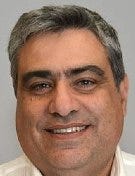Zadara Debuts Federated Edge: ‘A Lifeline’ for Cloud-Centric MSPs
Find out what the cloud service provider is doing to help channel partners reach more clients and add revenue.

Managed service providers who want to bring cloud computing closer to their customers have a new – perhaps even unprecedented – avenue: Zadara’s new “Federated Edge.”
The initiative is not a product or a service; rather, it is a consortium of MSPs. Working together through Zadara, the idea is to reach more cities and geographies than they feasibly could on their own. In the process, Zadara says, partners will win more business and add revenue streams.
Dave McCarthy, VP, cloud and edge infrastructure strategies, IDC, goes so far as to call Federated Edge “a lifeline” for MSPs. It will appeal to channel partners looking to boost their points of presence and deploy anywhere in the world the same way they deploy in their own data centers, he said.

IDC’s Dave McCarthy
“Latency requirements, cost considerations, operational resiliency and security/compliance factors all contribute to the need to deploy infrastructures closer to where data is generated and consumed — at the far edge of a network’s reach, away from the centralized cloud,” McCarthy noted.
The edge market is fragmented, he added.
“The problem is that MSPs are often regional in nature, so while they may be able to provide an edge solution in one geographic area, they cannot in others,” McCarthy told Channel Futures. “From an enterprise perspective, it means potentially working with multiple MSPs, which creates a new set of challenges. This is where Zadara Federated Edge is unique. It allows MSPs to extend their reach to a global market by standardizing on a common platform.”
Overall, think of Federated Edge as similar to cellphone roaming.

Zadara’s Nelson Nahum
“For the end user, it is transparent — they can go from place to place and talk freely, but on the back end it is an alliance of many telcos that allows that,” Zadara CEO Nelson Nahum told Channel Futures. “The capability to have end users accessing and deploying workloads in hundreds of locations without the need to have individual contracts with every MSP will drastically accelerate the edge cloud market and will definitely benefit every MSP.”
Understanding Federated Edge
Zadara powers Federated Edge with its so-called “edge” cloud services. Those include its computing and storage as a service platforms. From there, Zadara MSPs band together. They pool their resources to gain access to “10 times more cities than the hyperscalers,” said Nahum.
And the goal, he added, “is to be 100 times — basically every metropolitan city in the world will have an MSP with Federated Edge to serve workloads there.”
What that means, Nahum said, is no more “missing out on new opportunities.” That circumstance arises either because an MSP doesn’t have presence in a certain area or because the required capex investment is too big, especially for a short-term deal. Federated Edge changes all that, Nahum said.
Here’s our most recent list of important channel-program changes you should know. |
Every participating MSP “will be able to deploy applications in hundreds of different places without the need to have data centers, equipment, etc.,” he explained. “Zadara will be focusing on workloads that will benefit the edge (i.e., low latencies, high bandwidth, compliance, security etc.) — something that the hyperscalers don’t have real solutions for. In addition, many MSPs will gain customers from other MSPs that are putting their workloads there, so the bigger the Federated Edge, the better for every MSP.”
Zadara, too, will bring edge customers to MSPs, Nahum said.
No Conflict with the Big Boys
Along the way, there’s no need to fret. Federated Edge does not pit MSPs against their public cloud providers, à la Amazon Web Services, Microsoft Azure or Google Cloud Platform. Instead, the initiative “extends the cloud market by having a new public cloud that is composed of hundreds of MSPs worldwide and is targeted for edge workloads,” Nahum said.
Furthermore, partners do not have to buy more hardware or technology or pay for more personnel to …
… take part in Federated Edge.
“Joining the Federated Edge program doesn’t cost any money,” Nahum said. “The MSP gets the immediate benefit of being able to deploy workloads worldwide and the opportunity to have third-party customers deployed in their data centers while getting paid by Zadara for the usage of the third party.”
MSPs, then, share revenue. Here’s how that works: Assume MSP A sells a solution that requires compute and storage at three different locations at MSP A and B and C.
“MSP A charges their customer for the entire usage,” Nahum said. Then, “Zadara charges MSP A. Zadara pays back MSP B and MSP C for the usage of the MSP A.”
In a typical deal, the MSP selling the solution earns 25%. Zadara pays the MSP hosting that solution, depending on the resources used by the third party, Nahum said.
Usage pricing all is consumption-based, just like regular cloud.
The MSP’s Perspective
San Diego-based MSP NFINIT pitched in as one of Federated Edge’s proof-of-concept partners. The program “is giving us the opportunity to deploy services in regions where we haven’t had a solution in the past,” Jeremy Fitzpatrick, vice president of sales and marketing, told Channel Futures.
As one example, a client needed compute infrastructure that NFINIT was going to put in its local cloud — even though that wasn’t ideal.

NFINIT’s Jeremy Fitzpatrick
“Strict compliance regulations and GDPR forced us to keep the data where they are, in the EU,” Fitzpatrick said. However, “in less than a month, we leveraged Federated Edge to spin up a zCompute node in Germany to meet the client need.”
In addition, Fitzpatrick said, Federated Edge gives NFINIT the ability to put an opex cloud infrastructure on a client site.
“We can use that as our edge tentacle to bring compute and workloads from the client location to our centralized cloud infrastructure,” he said.
For now, Fitzpatrick sees Federated Edge making its greatest impact by extending existing services’ footprints. But he predicts something more, as well.
“We also see Federated Edge as expanding our AWS public cloud management service, offering a secondary target for disaster recovery, creating more vendor neutrality and diversity,” he said.
And therein lies the point of Federated Edge — to open doors for MSPs.
Fitzpatrick agrees.
“Federated Edge gives us the capabilities to add services that just didn’t make sense for us to build on our own,” he said. “We have core services that we own and operate 100%. Federated Edge gives us complementary services bundled with a superior level of support to quickly and efficiently widen our portfolio. Zadara is a great partner with whom we can confidently build our business.”
McCarthy holds a similar view.
“I believe Zadara Federated Edge enables MSPs to compete for business that they could not address on their own,” he said. “Zadara has also created a business model that can increase MSP revenue while limiting risk.”
Read more about:
MSPsAbout the Author(s)
You May Also Like


